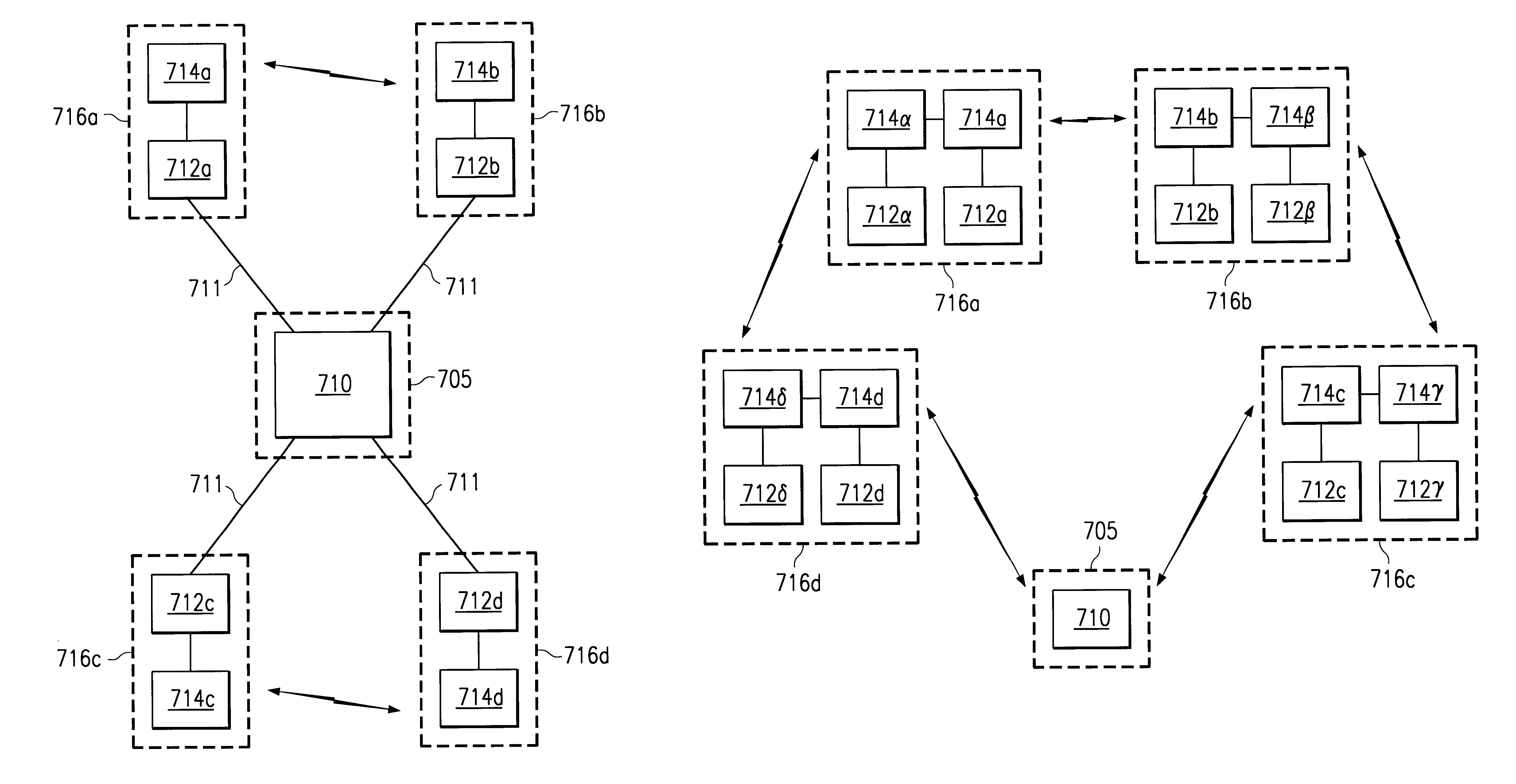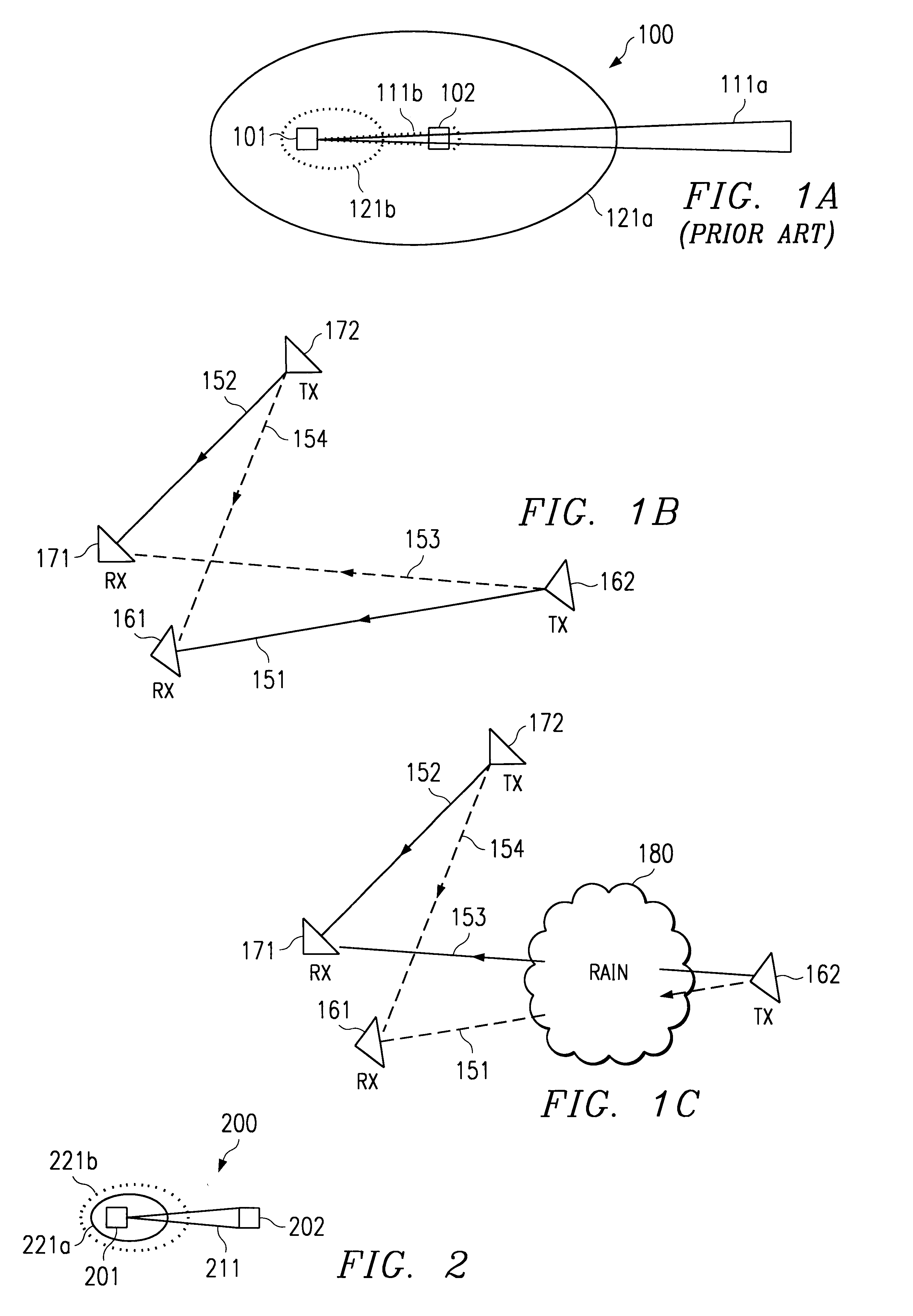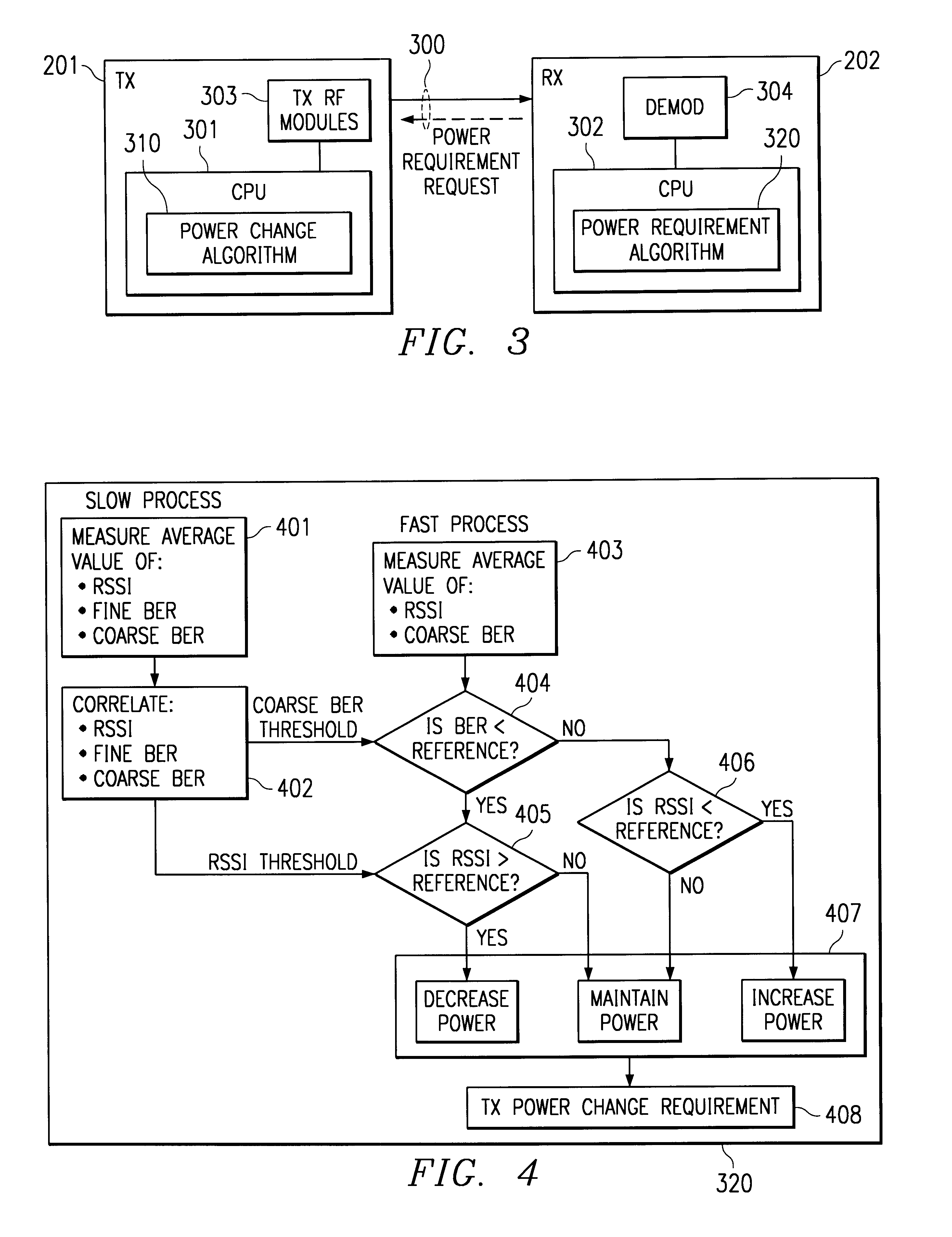Radio network performance management
- Summary
- Abstract
- Description
- Claims
- Application Information
AI Technical Summary
Benefits of technology
Problems solved by technology
Method used
Image
Examples
Embodiment Construction
In a typical point-to-point communication system communication links are established between a transmitter and receiver pair in order to carry signals and information there between. For example, directing attention to FIG. 1A wherein a prior art point-to-point communication link is shown generally as system 100, transmitter 101 and receiver 102 form a transmitter / receiver pair. Here transmitter 101 has main beam 111a directed toward receiver 102 in order to establish a wireless communication link suitable for providing signals and information there between. Transmitter 101 also includes area of influence 121a, which may consist of side lobes, back lobes, and the like, wherein signals radiated by transmitter 101 may be received outside of main beam 111a.
Accordingly, any receiver disposed within either main beam 111a or area of influence 121a may establish communication with transmitter 101. However, in a point-to-point system, it is typically desired that only a single receiver esta...
PUM
 Login to View More
Login to View More Abstract
Description
Claims
Application Information
 Login to View More
Login to View More - R&D
- Intellectual Property
- Life Sciences
- Materials
- Tech Scout
- Unparalleled Data Quality
- Higher Quality Content
- 60% Fewer Hallucinations
Browse by: Latest US Patents, China's latest patents, Technical Efficacy Thesaurus, Application Domain, Technology Topic, Popular Technical Reports.
© 2025 PatSnap. All rights reserved.Legal|Privacy policy|Modern Slavery Act Transparency Statement|Sitemap|About US| Contact US: help@patsnap.com



